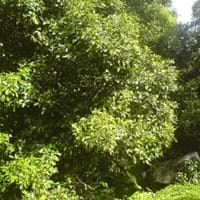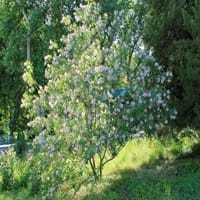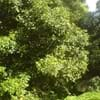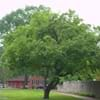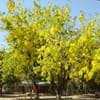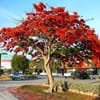Life Span
Perennial
Perennial
Type
Tender Perennial
Tree
Origin
Hybrid origin
Hybrid origin
Types
Not Available
Not Available
Habitat
meadows, Pastures
Dry areas, Semi desert
USDA Hardiness Zone
7-15
7-11
AHS Heat Zone
Not Available
9-5
Sunset Zone
H1, H2, 14, 15, 16, 17, 18, 19, 20, 21, 22, 23, 24
3a, 3b, 4, 5, 6, 7, 8, 9, 10, 11, 12, 13, 14, 15, 16, 17, 18, 19, 20, 21, 22, 23, 24
Habit
Clump-Forming
Oval or Rounded
Flower Color
White, Yellow, Purple, Brown
White, Purple, Pink, Light Pink, Lavender
Flower Color Modifier
Bicolor
Bicolor
Fruit Color
Dark Red
Not Available
Leaf Color in Spring
Green
Green
Leaf Color in Summer
Green, Yellow green
Green
Leaf Color in Fall
Green
Green
Leaf Color in Winter
Green
Not Available
Leaf Shape
Oval
Long Elliptic
Plant Season
Spring, Summer, Fall, Winter
Spring, Summer, Fall
Sunlight
Full Sun, Partial Sun
Full Sun
Type of Soil
Loam, Sand
Loam, Sand
The pH of Soil
Acidic, Neutral, Alkaline
Neutral, Alkaline
Soil Drainage
Average
Well drained
Bloom Time
Indeterminate
Late Spring, Early Summer, Summer, Late Summer, Early Fall, Fall
Tolerances
Drought
Drought
Where to Plant?
Ground
Ground
How to Plant?
Seedlings, Stem Cutting
Seedlings, Stem Planting
Plant Maintenance
Medium
Medium
Watering Requirements
Average Water Needs
Keep ground moist, Water Deeply, Water less during winter
In Summer
Lots of watering
Lots of watering
In Spring
Moderate
Moderate
In Winter
Average Water
Average Water
Soil pH
Acidic, Neutral, Alkaline
Neutral, Alkaline
Soil Type
Loam, Sand
Loam, Sand
Soil Drainage Capacity
Average
Well drained
Sun Exposure
Full Sun, Partial Sun
Full Sun
Pruning
Remove damaged leaves, Remove dead branches, Remove dead leaves
Prune if you want to improve plant shape, Remove dead branches, Remove dead leaves, Remove dead or diseased plant parts, Requires little pruning, Requires very little pruning
Fertilizers
All-Purpose Liquid Fertilizer, Well-rotted manure
All-Purpose Liquid Fertilizer, fertilize in growing season
Pests and Diseases
Canker, Nematodes, Red blotch, Scale, Soft scales
Insects, Red blotch
Plant Tolerance
Drought
Drought, Heat Tolerance
Flower Petal Number
Not Available
Single
Foliage Texture
Medium
Medium
Foliage Sheen
Glossy
Matte
Attracts
Nematodes, White peach scale
Hummingbirds, Butterflies
Allergy
Avoid during Pregnancy, Liver disease
Not Available
Aesthetic Uses
Not Used For Aesthetic Purpose
Beautification, Landscape Designing, Showy Purposes
Beauty Benefits
Acne, Good for skin and hair, Remove blemishes
Not Available
Environmental Uses
Air purification
Air purification, Amazing growth rate, Food for birds, Food for insects, Nesting sites for birds, No fertilizer, pesticides, or herbicides needed, Prevent Soil Erosion
Medicinal Uses
Cough, Diarrhea, Gastritis, Vomiting
No Medicinal Use
Part of Plant Used
Buds, Flowers
Flowers
Other Uses
Used as a nutritious food item, Used as a spice
Decoration Purposes, Showy Purposes, Used as Ornamental plant
Used As Indoor Plant
No
No
Used As Outdoor Plant
Yes
Yes
Garden Design
Edible, Herb / Vegetable, Shade Trees
Feature Plant, Foundation, Mixed Border, Shade Trees
Botanical Name
Syzygium aromaticum
X CHITALPA tashkentensis
Common Name
Clove
Chitalpa
In Hindi
लौंग
Chitalpa संयंत्र
In German
Nelke
Chitalpa Pflanze
In French
Clou de girofle
plante Chitalpa
In Spanish
Clavo
planta Chitalpa
In Greek
Σκελίδα σκόρδο
φυτό Chitalpa
In Portuguese
dente de alho
planta Chitalpa
In Polish
Ząbek
Chitalpa roślin
In Latin
Castanea
Chitalpa herba
Phylum
Magnoliophyta
Magnoliophyta
Class
Magnoliopsida
Not Available
Family
Musaceae
Bignoniaceae
Clade
Angiosperms, Eudicots, Rosids
Angiosperms, Asterids, Eudicots
Tribe
Syzygieae
Not Available
Subfamily
Myrtoideae
Not Available
Number of Species
Not Available
Importance of Clove and Chitalpa
Want to have the most appropriate plant for your garden? You might want to know the importance of Clove and Chitalpa. Basically, these two plants vary in many aspects. Compare Clove and Chitalpa as they differ in many characteristics such as their life, care, benefits, facts, etc. Every gardener must at least have the slightest clue about the plants he wants to plant in his garden. Compare their benefits, which differ in many ways like facts and uses. The medicinal use of Clove is Cough, Diarrhea, Gastritis and Vomiting whereas of Chitalpa is No Medicinal Use. Clove has beauty benefits as follows: Acne, Good for skin and hair and Remove blemishes while Chitalpa has beauty benefits as follows: Acne, Good for skin and hair and Remove blemishes.
Compare Facts of Clove vs Chitalpa
How to choose the best garden plant for your garden depending upon its facts? Here garden plant comparison will help you to solve this query. Compare the facts of Clove vs Chitalpa and know which one to choose. As garden plants have benefits and other uses, allergy is also a major drawback of plants for some people. Allergic reactions of Clove are Avoid during Pregnancy and Liver disease whereas of Chitalpa have Not Available respectively. Having a fruit bearing plant in your garden can be a plus point of your garden. Clove has no showy fruits and Chitalpa has no showy fruits. Also Clove is not flowering and Chitalpa is not flowering . You can compare Clove and Chitalpa facts and facts of other plants too.
